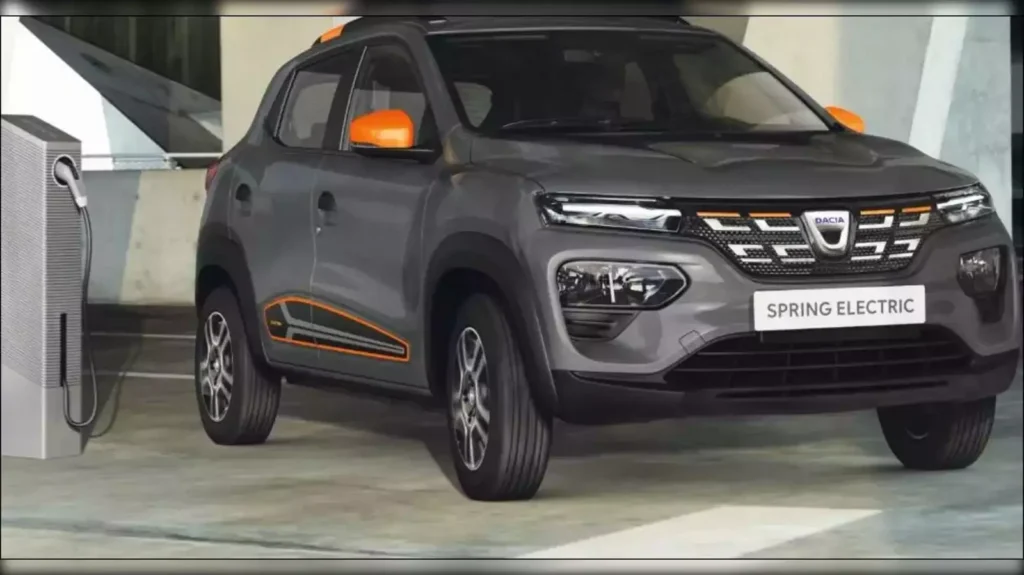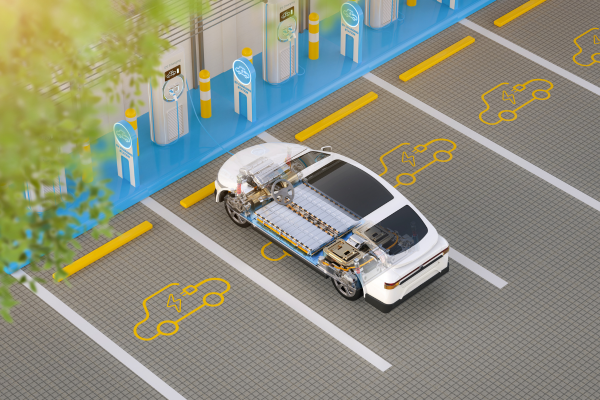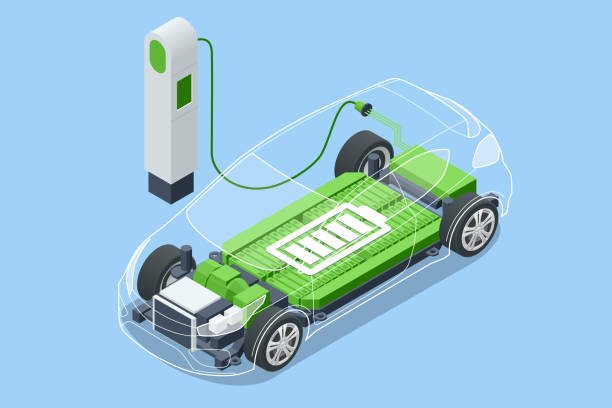Table of Contents
- Introduction
- Challenges for the Electric Vehicles
- Opportunities for the Electric Vehicles
- Conclusion
- Frequently Asked Questions.
Introduction:

As the world accelerates towards a greener future, Electric Vehicles have emerged as a beacon of hope in the fight against climate change and environmental degradation. How Electric Vehicle User amidst the excitement surrounding their potential, it’s crucial to acknowledge the risks that could impede their widespread adoption and long-term success.
In this article, we delve into the major risks threatening the electric vehicle outlook, examining both challenges and opportunities in this dynamic landscape.
Challenges for the Electric Vehicles
1. Infrastructure Constraints:

- Limited charging infrastructure in many regions poses a significant barrier to Electric Vehicles adoption.
- Insufficient charging stations, especially in rural and underdeveloped areas, can deter potential buyers concerned about range anxiety.
- Upgrading infrastructure to support fast-charging capabilities requires substantial investment and time.
2. Battery Technology Limitations:

- Despite advancements, battery technology still faces challenges such as limited energy density, high costs, and concerns over resource scarcity.
- Lithium-ion batteries, the predominant choice for Electric Vehicles, face supply chain risks due to reliance on specific minerals like cobalt and lithium, which are subject to geopolitical tensions and price volatility.
- Recycling and disposal of batteries raise environmental concerns and require regulatory frameworks for sustainable practices.
3. Cost Considerations:
- While the long-term operational costs of Electric Vehicles are lower than traditional vehicles, the upfront purchase price remains a significant deterrent for many consumers.
- Government incentives and subsidies play a crucial role in making Electric Vehicles more affordable, but their stability and availability vary across regions and can impact market demand.
4. Consumer Perceptions and Preferences:
- Misconceptions about Electric Vehicles, including concerns about performance, reliability, and charging convenience, persist among consumers.
- Preference for conventional vehicles, especially in markets with strong automotive traditions, poses a challenge to Electric vehicles market penetration.
- Addressing consumer education and perception through targeted marketing and experience-based initiatives is essential for overcoming resistance.
5. Regulatory Uncertainty:
- Shifting regulatory landscapes, including emission standards, taxation policies, and incentives, create uncertainty for automakers and investors.
- Lack of harmonization across regions adds complexity and can hinder global Electric Vehicles deployment strategies.
- Clear, consistent, and long-term regulatory frameworks are vital to providing stability and fostering industry growth.
6. Range Anxiety:

- Despite improvements in battery technology, concerns over the limited driving range of Electric Vehicles persist.
- Anxiety about running out of charge before reaching a charging station can deter potential buyers, especially for long-distance travel.
- Enhancing battery efficiency and expanding charging infrastructure are essential to all alleviate range anxiety and boost consumer confidence in Electric Vehicles.
7. Supply Chain Vulnerabilities:
- The global supply chain for Electric Vehicles components, including batteries, motors, and electronic systems, is susceptible to disruptions and shortages.
- Dependency on specific suppliers and raw materials from geopolitically sensitive regions increases supply chain risks.
- Ensuring resilience through diversification of supply sources and localizing production can mitigate vulnerabilities and safeguard against disruptions.
8. Vehicle Affordability and Accessibility:
- While total cost of ownership Favors Electric Vehicles over time, the initial purchase price remains high for many consumers.
- Limited availability of affordable Electric vehicles models, especially in lower-income segments, restricts accessibility and widens the adoption gap.
- Financial incentives, subsidies, and innovative financing schemes are necessary to make Electric Vehicles accessible to a broader demographic and accelerate market uptake.
9. Charging Infrastructure Compatibility:

- Inconsistencies in charging standards and protocols across different regions and manufacturers hinder interoperability and convenience for Electric vehicles users.
- Compatibility issues between vehicles and charging stations, such as plug types and charging speeds, complicate the charging experience.
- Standardization efforts and collaborative initiatives are essential to establish uniformity in charging infrastructure and enhance user convenience.
10. Grid Integration Challenges:
- Scaling up electric vehicle adoption poses challenges to grid infrastructure, including increased electricity demand and peak load management.
- Integrating Electric Vehicles charging with renewable energy sources requires smart grid solutions and demand-side management strategies.
- Balancing grid reliability, energy efficiency, and affordability amidst growing Electric vehicles penetration necessitates coordinated planning and investment in grid modernization.
11. Lifecycle Environmental Impact:
- While Electric Vehicles offer emissions reductions during operation, their environmental footprint throughout the lifecycle warrants scrutiny.
- Manufacturing processes, battery production, and end-of-life disposal raise concerns about resource depletion, pollution, and waste management.
- Implementing sustainable practices, such as eco-friendly materials sourcing, recycling, and circular economy principles, is critical to minimizing the lifecycle impact of Electric Vehicles.
Opportunities For the Electric Vehicles
1. Technological Innovation:
- Ongoing research and development in battery technology promise breakthroughs in energy density, charging speed, and cost-effectiveness.
- Advancements in materials science, such as solid-state batteries and alternative chemistries, offer potential solutions to current limitations.
- Collaborations between academia, industry, and governments drive innovation and accelerate the adoption of next-generation Electric Vehicles technologies.
2. Investment in Infrastructure:
- Governments and private sector entities are increasingly investing in charging infrastructure expansion, including fast-charging networks along highways and urban areas.
- Smart grid integration, renewable energy adoption, and energy storage solutions enhance the resilience and sustainability of Electric Vehicles charging ecosystems.
- Public-private partnerships facilitate infrastructure and development and address gaps in coverage, fostering Electric Vehicles adoption across diverse geographies.
3. Economic Benefits:
- The growing Electric Vehicles market presents economic opportunities, including job creation in manufacturing, maintenance, and related industries.
- Reduced reliance on fossil fuels enhances energy security and mitigates the economic risks associated with oil price volatility and geopolitical tensions.
- Transitioning towards electrification aligns with long-term sustainability goals, fostering innovation and competitiveness in the automotive sector.
4. Environmental Imperatives:
- Addressing climate change requires decarbonizing the transportation sector, making Electric Vehicles indispensable in Electric Vehicles carbon neutrality targets.
- Electrification of vehicles reduces greenhouse gas emissions, air pollution, and dependence on finite fossil fuel resources.
- Sustainable mobility solutions, including Electric Vehicles powered by renewable energy, contribute to building resilient and environmentally conscious communities.
5. R&D Advancements in Vehicle-to-Grid (V2G) Technology:
- Vehicle-to-grid (V2G) technology enables bidirectional energy flow between Electric Vehicles and the grid, unlocking new opportunities for energy storage and grid stability.
- Integrating Electric Vehicles into the grid as flexible energy resources offers Electric Vehicles revenue-generating opportunities for vehicle owners and grid operators through demand response programs and ancillary services.
- Research and Electric Vehicles development initiatives focused on V2G technology hold promise for optimizing energy usage, reducing costs, and enhancing grid resilience.
6. E-Mobility Ecosystem Expansion:
- The electrification of transportation extends beyond passenger cars to encompass a wide range of vehicles, including buses, trucks, and two-wheelers.
- Expansion of the e-mobility ecosystem presents opportunities for innovation and market growth in diverse sectors, such as public transportation, logistics, and shared mobility services.
- Collaborative efforts to Electric Vehicles charging infrastructure, fleet electrification solutions, and integrated mobility platforms catalyse the transition towards sustainable transportation systems.
7. Emergence of Energy-as-a-Service (EaaS) Models:
- Energy-as-a-Service (EaaS) models offer holistic solutions for electric vehicle charging, energy management, and integration with renewable energy sources.
- Innovative business models, such as subscription-based charging plans and energy aggregation platforms, provide flexibility and cost savings for Electric Vehicles users.
- Partnerships between energy providers, automakers, and technology firms drive the Electric Vehicles solution of EaaS offerings, unlocking value for consumers and promoting grid sustainability.
8. Urban Planning and Smart City Integration:
- Electrification of transportation is integral to smart city initiatives aimed at enhancing urban sustainability, mobility, and liveability.
- Urban planning strategies prioritize Electric Vehicles friendly infrastructure, including dedicated lanes, charging hubs, and parking facilities, to encourage sustainable mobility choices.
- Integration of Electric Vehicles with smart city technologies, such as intelligent traffic management systems and urban data analytics, optimizes transportation efficiency and reduces environmental impact.
9. Collaborative Research and Innovation Networks:
- Collaborative research and innovation networks bring together industry stakeholders, academia, and government agencies to address complex challenges and drive technological advancements.
- Public-private partnerships foster knowledge sharing, resource pooling, and joint R&D efforts focused on critical areas such as battery technology, charging infrastructure, and vehicle-grid integration.
- Cross-sector collaboration accelerates innovation cycles, reduces and Electric Vehicles development costs, and facilitates the commercialization of cutting-edge Electric Vehicles technologies.
10. Economic and Social Benefits of Electrification:
- The transition to Electric Vehicles stimulates economic growth and job creation across the automotive value chain, from manufacturing to maintenance and software development.
- Sustainable mobility solutions enhance public health by reducing air pollution and noise pollution in urban environments, improving quality of life for residents.
- Electrification initiatives contribute to social equity by increasing access to clean transportation options for underserved communities and reducing disparities in mobility.
Conclusion:
While the electric vehicle outlook is fraught with challenges, it is also brimming with opportunities for innovation, growth, and sustainability. Overcoming infrastructure constraints, technological limitations, and consumer hesitations demands concerted efforts from stakeholders across the public and private sectors.
By embracing innovation, investing in infrastructure, and fostering regulatory stability, we can steer towards a future where Electric Vehicles drive us towards a cleaner, greener, and more sustainable world.
Frequently Asked Questions
The infrastructure challenges facing EVs in 2024 primarily revolve around the insufficient charging infrastructure. Many regions still lack an extensive network of charging stations, particularly in rural and underdeveloped areas. This limited infrastructure contributes to range anxiety among potential EV buyers and slows down the adoption rate. Addressing this challenge requires significant investment in expanding charging networks and implementing fast-charging capabilities to enhance user convenience and confidence in EVs.
Despite advancements, battery technology continues to face limitations such as energy density, cost, and resource scarcity concerns. The reliance on specific minerals like cobalt and lithium for lithium-ion batteries poses supply chain risks, given their geopolitical vulnerabilities and price volatility. Additionally, battery recycling and disposal raise environmental concerns. Overcoming these limitations requires ongoing research and development efforts to improve battery performance, reduce costs, and develop sustainable recycling solutions to support the long-term viability of EVs.
Regulatory uncertainties, including shifting emission standards, taxation policies, and incentives, create challenges for automakers and investors in the EV market. The lack of harmonization across regions adds complexity and hampers global deployment strategies. Clear, consistent, and long-term regulatory frameworks are crucial for providing stability and fostering industry growth. Governments need to establish supportive policies that incentivize EV adoption while ensuring predictability and transparency for stakeholders.
Consumer perceptions and preferences play a significant role in shaping the EV market in 2024. Misconceptions about EVs, including concerns about performance, reliability, and charging convenience, continue to persist among consumers, affecting adoption rates. Moreover, the preference for conventional vehicles, especially in markets with strong automotive traditions, poses a challenge to EV penetration. Educating consumers, improving EV marketing strategies, and enhancing the overall ownership experience are essential for overcoming resistance and increasing acceptance of EVs.
Economic challenges, particularly related to the cost of EVs, impact their outlook in 2024. While the long-term operational costs of EVs are lower than traditional vehicles, the upfront purchase price remains a significant barrier for many consumers. Government incentives and subsidies play a crucial role in making EVs more affordable, but their stability and availability vary across regions. Ensuring financial incentives and implementing innovative financing solutions are essential for making EVs accessible to a broader demographic and driving market growth.

